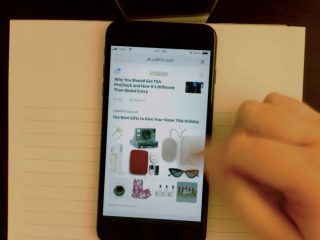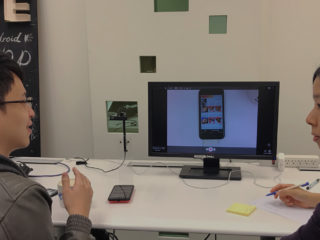In 2020 June, ASUS, a global electronics brand, called for pitch competition for the creation of their EU eShop platform. As UX architect of Isobar, I pitched successfully, leading the project from design to the first delivery. Beyond commerce functionality planning, we utilised quantitative data and behavioural analysis of ASUS shoppers together with engaging ASUS business users/ stakeholders, enabling customer-focused commerce services upon a new Adobe cloud platform.
The platform has been successfully launched in 13 EU countries and extended to other markets including Canada, Mexican and Malaya in 2022.
Project objectives
Businesswise, ASUS would like to integrate their dispersed EU eShop resources into Adobe Magento, which also can let their store managers on- and off-shelf effectively. Technology-wise, the client aimed to build new eShop on Adobe Magento, a commerce PaaS (Platform-as-a-Service) by which they can develop, run, and manage applications with less effort. In brief, the key focus from the client was to build the site robust enough for daily EU retail business.
Isobar, however, brought the “customer” into the focus of the project and started from establishing ideal shopping experiences together with the client.
The KPI of the project ultimately was customer satisfaction including NPS and performance indicators of GA.
My role & responsibility
As senior UX architect in the project team, I led the project, taking care of the whole customer-centred design activity planning and execution from discovery to wireframe design, working collaboratively with one project manager, one UI designer and three developer leads. In some activities such as workshop material preparation and wireframe design, I have been supported by two UX designers.
Process
Business understanding
Closely communicate with clients to know business operation and project details
Marketing and customer survey
Look into best practices and existing customers’ shopping behaviours
Discovery workshop
Have workshop with clients to profile target audiences
UX architect & UI design
Plan the interface from audiences’ perspectives
Business understanding
Closely communicate with clients to know business operation and project details
In order to understand the client’s management of the multiple existing eShop platforms, how the headquarter run their business together with their EU offices, as well as their requirements of the new platform, Isobar held frequent meetings in conjunction with several interviews of stakeholders across various business units, from the headquarter to the EU store managers.


Marketing and customer survey
Look into best practices and existing customers’ shopping behaviours
Apart from business aspect understanding, we collected best practices of mobile eShop in accordance with customer journeys, giving the project team a wider view of online shopping service in mobile-first context.
In the interest of current European customers’ satisfactions about the eShop, we launched online survey in Italy, France and Spain (also HQ Taiwan) in cooperation with the client. Meanwhile we studied through key measurements of Google Analytics of eShop of these first-tier countries. Informed together by stakeholder interviews and the results of online customer survey, potential e-Shop features and initial customer profiles were portrayed.


Discovery workshop
Have workshop with clients to profile target audiences
With the purpose to discover target audiences in depth — what they want and don’t want; what they try achieve and avoid on new eShop, we invited the client and their store managers from the world (EU was majority), in total around 35 people, to participate in the two-day discovery workshop.

In the workshop, based on initial proposals, profiles of the primary target audience together with the potential ones were created through the empathy map in cooperation with customer journeys, under each phase of which pain points, gains, tasks and user stories were pinned down, based on the respective regions.

Interface design via paper collage
After getting to know the target audiences, participants were engaged in creating user interfaces by which they could visualise their ideas coming across their mind easily with paper materials we prepared. Via UI collage by group (each group in charge of key pages of a customer journey phase) and assessment afterwards, we gained deep understanding about what store managers think is good and not good to have for the new eShop and why.



UX architect & UI design
Plan and design the interface from audiences’ perspectives
The two proposed personas were consolidated and entitled properly during the co-creation – the primary audience was Techie; the secondary was Value Shopper. The third, which was emerging in the workshop, was Gamer.
Based on the deeper understanding of personas, what we have learned from the paper collage together with the features of Adobe Magento, the information architecture of the new eShop platform was designed. In oder to check full functionalities, the desktop website was drafted firstly by using wireframes. The mobile version was then created one batch later.
A number of key new developed ideas like:
- The hierarchy of products was restructured, i.e. website main navigation and filters, so that value shoppers who are not tech savvy will no longer have a difficult time finding the right products.
- On the shop page, users can easier choose their preferred specifications next to the default. Good for both customer groups.
- Added relevant FAQ during the shopping journey to reinforce “peace of mind” service for Techies and “get questions answered online efficiently” for value shoppers.
- The viability of security and reliability throughout checkout was intensified, which techies are so caring about.
The design was built by components so each country can adjust the contents based on their needs of such as product types and the number of products in the near future.
Soon after key wireframes were approved by the clients, we and their designers created the final interfaces of the whole system collaboratively to ensure the launch to the market could be on time.
Results and Impacts
The development of the new eShop is still in progress. Overall experiences will be tested before the launch. However, two points of impacts already can be addressed:
Team members were happy to talk about customer values in product development
Projects of system development typically pay attention on technologic possibilities and internal ambitions far more than external real end users’ points of view. We changed this by connecting by “what customers want and don’t want” with the client. Through cooperation, clients unfold the benefits of customer centric design by themselves instead of having the role of critical assessors. Those benefits can be used furthermore as the reference on how the interface can be structured visually.
Transformative approaches won recognition
The eShop project brought in new initiatives, encouraging the client to put customers first before business and technology and thus transforming the way of thinking which has been rooted in Taiwan industry for decades. Isobar Taiwan, due to this effort, got second prize of Greater China Consultancy of the Year (2019).
The EU eShops were successfully launched and extended to more countries
From the middle of 2020, the eShop was gradually debuted in different EU countries, first was in Italy, as it is one of the most profitable markets. The following markets included France, Netherlands and so on, in total 13 EU countries.
As the project went well tracked by customer surveys and GA continually, ASUS decided to work with us on rolling out US, Canada, Mexican, Malaya and Taiwan’s eShops. All markets were iteratively better localised together with GA performance tracking.








